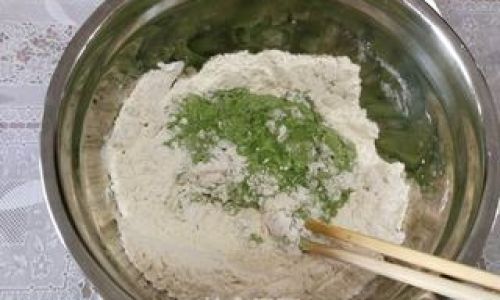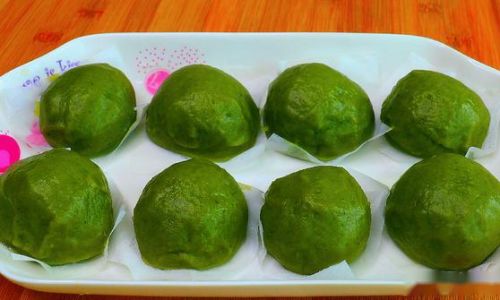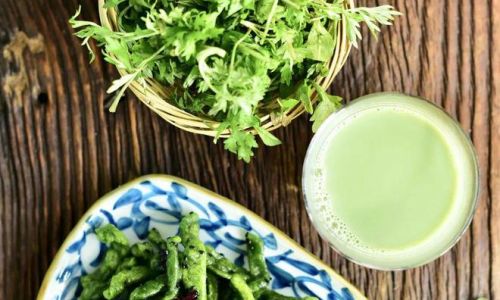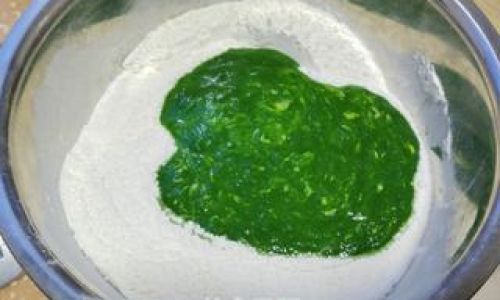Introduction
Mugwort, scientifically known as Artemisia argyi, is a perennial herb revered for its earthy, slightly bitter flavor and vibrant green hue. For centuries, it has been a cornerstone in traditional medicine and cuisine across Asia, Europe, and beyond. When paired with flour—a pantry staple found in kitchens worldwide—this humble herb transforms into a versatile ingredient capable of elevating both sweet and savory dishes. From tender dumplings to aromatic bread, the combination of mugwort and flour offers a gateway to exploring culinary traditions while inspiring modern adaptations. This article delves into the art of harnessing mugwort’s unique properties to create a range of delectable dishes, blending heritage with innovation.
Mugwort Dumplings: A Taste of Spring
In many East Asian cultures, mugwort dumplings, known as qingtuan in China or ssuk kimchi mandu in Korea, symbolize the arrival of spring. These emerald-green dumplings are a hallmark of seasonal celebrations, offering a delicate balance of herbal freshness and glutinous chewiness.
Ingredients:

- 200g fresh mugwort leaves (or 2 tbsp dried mugwort powder)
- 300g glutinous rice flour
- 100g regular rice flour
- 150ml hot water
- 100g sweet red bean paste (or sesame filling)
- 1 tbsp vegetable oil
- Pinch of salt
Instructions:
- Prepare the Mugwort: Blanch fresh mugwort leaves in boiling water for 30 seconds, then shock in ice water to retain color. Squeeze out excess moisture and blend into a smooth paste. If using dried powder, mix with 2 tbsp hot water.
- Make the Dough: Combine glutinous and rice flours in a bowl. Add mugwort paste, hot water, oil, and salt. Knead until a soft, pliable dough forms.
- Assemble the Dumplings: Divide the dough into 12 portions. Flatten each into a disc, spoon filling into the center, and seal tightly.
- Steam: Line a steamer with parchment paper. Place dumplings 2 inches apart and steam for 15 minutes. Serve warm.
Variations: For a savory twist, fill with seasoned minced meat or mushrooms. Drizzle with chili oil for an extra kick.
Mugwort Pancakes: Crispy Delights with Herbal Depth
Mugwort pancakes, popular in Korean and Japanese cuisine, boast a lacy texture and aroma that pairs beautifully with dipping sauces or as a side dish.
Ingredients:
- 1 cup all-purpose flour
- ½ cup mugwort leaves, finely chopped
- 1 egg
- 1 cup cold water
- 1 tsp baking powder
- ½ tsp salt
- 2 tbsp vegetable oil
Instructions:
- Batter: Whisk flour, baking powder, and salt. Add egg and water, stirring until smooth. Fold in mugwort.
- Cook: Heat oil in a nonstick pan over medium heat. Pour ¼ cup batter into the pan, swirling to create a thin, even layer. Cook until edges crisp (2-3 minutes), then flip.
- Serve: Stack pancakes and serve with soy-vinegar dip or as a wrap for grilled meats.
Pro Tip: Add grated daikon radish to the batter for a refreshing crunch.

Mugwort Noodles: Hand-Pulled Elegance
In Chinese and Japanese cooking, mugwort noodles (ssuk guksu in Korean) are prized for their vivid color and subtle herbal notes. They can be served hot in broths or chilled with dipping sauces.
Ingredients:
- 200g bread flour
- 50g mugwort powder
- 1 egg
- ½ tsp salt
- 80ml water
Instructions:
- Dough: Mix flour, mugwort powder, and salt. Create a well, add egg and water, and knead until smooth (10 minutes). Rest covered for 30 minutes.
- Shape: Roll dough into a rectangle, 1cm thick. Slice into thin strips. Gently pull each strip to elongate.
- Cook: Boil noodles for 3-4 minutes. Toss with sesame oil to prevent sticking.
- Serve: Pair with a clear dashi broth, sliced pork, and a soft-boiled egg.
Mugwort Scones: A British Twist with Asian Flair
Mugwort’s herbal complexity adds intrigue to classic scones, creating a teatime treat that bridges continents.
Ingredients:
- 2 cups all-purpose flour
- 1 tbsp baking powder
- ¼ cup sugar
- ½ tsp salt
- 1/3 cup cold butter, cubed
- ½ cup milk
- 2 tbsp fresh mugwort, minced
- 1 egg (for egg wash)
Instructions:

- Dry Mix: Combine flour, baking powder, sugar, and salt. Cut in butter until crumbly.
- Wet Mix: Stir in milk and mugwort. Knead lightly until dough forms.
- Shape: Pat dough into a 1-inch thick circle. Cut into 8 wedges.
- Bake: Brush with egg wash. Bake at 400°F (200°C) for 15-18 minutes until golden.
Mugwort Mochi: Chewy Confections
In Japan, yomogi mochi is a beloved springtime dessert, combining glutinous rice flour with mugwort for a grassy sweetness.
Ingredients:
- 150g glutinous rice flour
- 50g sugar
- 200ml water
- 2 tbsp mugwort powder
- Anko (sweet red bean paste)
- Katakuriko (potato starch) for dusting
Instructions:
- Mix: Combine flour, sugar, mugwort powder, and water. Steam for 20 minutes.
- Knead: Dust a surface with katakuriko. Knead the steamed dough until smooth.
- Shape: Flatten dough, place anko in the center, and seal. Coat with starch to prevent sticking.
Mugwort and Cheese Bread: Savory Indulgence
Mugwort’s earthiness complements sharp cheddar in this rustic loaf, perfect for soups or sandwiches.
Ingredients:
- 3 cups bread flour
- 1 tbsp instant yeast
- 1 tsp salt
- 1 cup warm milk
- 2 tbsp honey
- ½ cup grated cheddar
- ¼ cup fresh mugwort, chopped
Instructions:

- Dough: Mix flour, yeast, and salt. Add milk and honey. Knead for 8 minutes. Fold in cheese and mugwort.
- Rise: Cover and let rise for 1 hour.
- Bake: Shape into a boule. Bake at 375°F (190°C) for 30-35 minutes.
Health Benefits and Tips
Mugwort is rich in antioxidants, vitamins A and C, and flavonoids, which may aid digestion and reduce inflammation. When using fresh mugwort, opt for young leaves, as older ones can be bitter. Dried mugwort retains its flavor and is ideal for off-season baking.
Conclusion
The marriage of mugwort and flour transcends cultural boundaries, offering a canvas for culinary creativity. Whether wrapped in dumplings, fried into pancakes, or kneaded into bread, this herb imparts a distinctive character that honors tradition while inviting innovation. As home cooks increasingly seek to connect with seasonal ingredients and global flavors, mugwort emerges as a bridge between past and present—a humble green that transforms flour into gold. So, the next time you spot this herb at a market or in your garden, let it inspire a kitchen adventure that tantalizes the senses and nourishes the soul.






0 comments